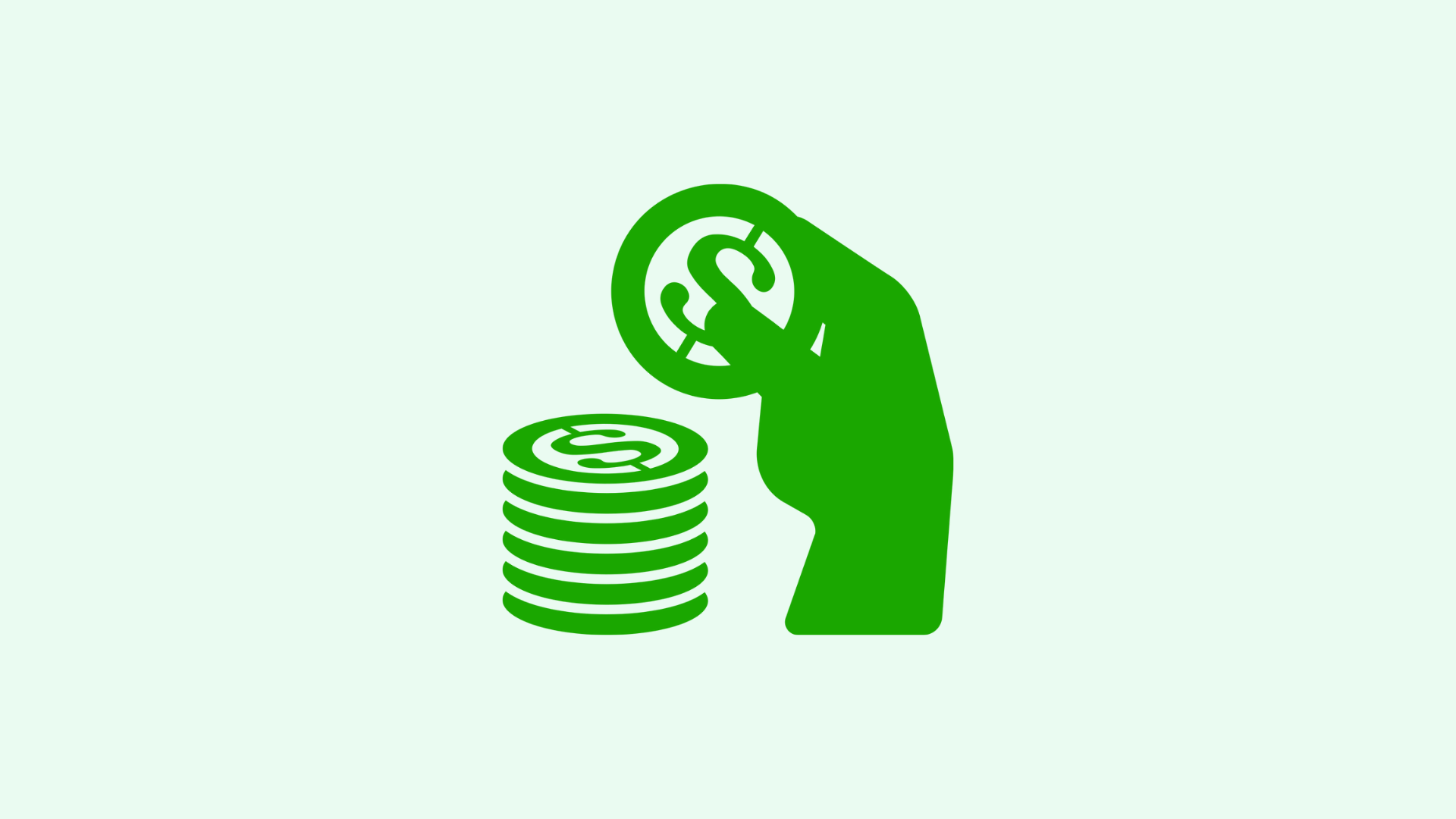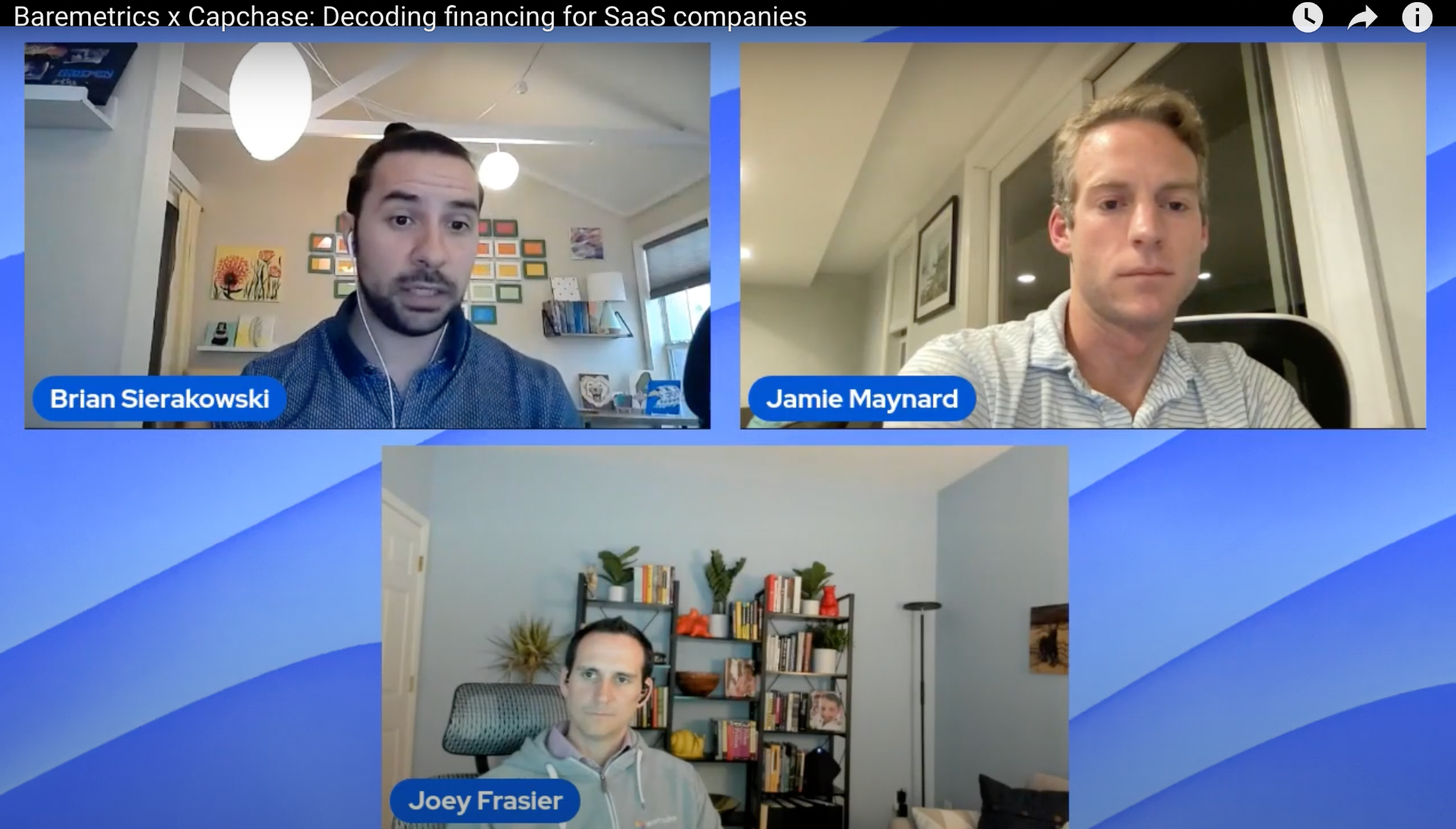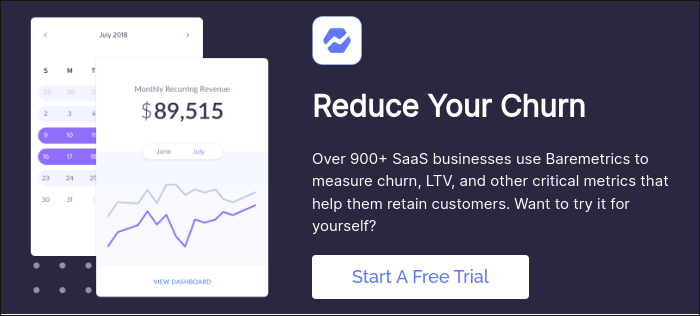Table of Contents

What does every SaaS founder want? To grow their companies—the faster, the better. But here’s the thing: company growth always comes at a cost.
For many SaaS companies, the cost of growth is ownership. Founders give up a portion of their businesses in exchange for money, which they then pour into marketing, sales, product development, and anything else they believe will help their company reach the next level.
This has been the standard approach to SaaS growth for years. But times are changing…
We recently sat down with Jamie Maynard, the Head of Enterprise Sales and Strategic Originations at Capchase, and Joey Frasier, the Co-Founder and CEO of Worksuite.
Capchase is a non-dilutive funding solution for SaaS and subscription-based businesses. Partnering with them allows SaaS founders to get the money they need to grow—without having to give up a piece of their company in the process.
Worksuite is a revolutionary freelancer management platform that has worked with Capchase to fuel company growth and ensure its founders maintain company control.
In our talk with Jamie and Joey, we discuss the current funding landscape for SaaS businesses, how to choose between equity capital and non-dilutive funding, and the importance of tracking SaaS metrics from the very beginning.
Note: This article is a summary of our talk with Jamie and Joey. Would you rather watch the full event and get every juicy detail? You can do so here.
The current fundraising landscape for SaaS Companies
The SaaS industry is on a bit of a hot streak, which makes sense.
In Jamie’s words, “Everyone who wasn’t SaaS is converting over to SaaS, because who doesn’t love the consistency of recurring revenue models?”
Venture capitalists have taken notice and poured giant stacks of cash into the SaaS space. Unfortunately, said cash isn’t distributed evenly. There are tons of high-potential SaaS companies that can’t acquire VC funding because they haven’t yet established a proven track record of success.
This fact has led to a gap in the market. How do SaaS companies scale at a rapid pace if they can’t bootstrap themselves to success, get a loan, or land an investment from a VC?
For many SaaS founders, the answer is to seek alternative funding.
Equity capital vs. non-dilutive funding
To wrap your head around the alternative funding options available to SaaS companies, you have to understand the difference between equity capital and non-dilutive funding.
Equity capital is the money that investors pay companies in exchange for ownership. If your company is worth a million dollars and your rich uncle offers you $500k in equity capital, he’s offering to buy half of your company from you.
Non-dilutive funding, on the other hand, is any form of funding that does NOT force founders to relinquish ownership of their companies. Bank loans, government grants, crowdfunding, product royalties, vouchers, and tax credits all fall into this category.
Which type of funding is right for your SaaS Company?
According to Jamie, “Equity capital is often essential to get a company off the ground.”
Hiring engineers to create a SaaS product is expensive. Most founders don’t have the funds they need in their savings accounts, which forces them to rely on other people’s money. But very few people will give you money without a significant reward in return, i.e. ownership.
If your rich uncle gives you $500k now, he’s basically saying, “I believe in your vision and I want to help you achieve your dream. But there’s no guarantee that this will work out. So, to compensate me for the risk I’m taking, I want half of your company. That way, if you become successful and your company goes up in value, I’m rewarded for putting my trust in you.”
It makes sense, but it’s not always the preferred option. Most founders want to own as much of their companies as they possibly can, which may lead them to seek non-dilutive funding.
Non-dilutive funding use cases for SaaS Companies
So, when does non-dilutive funding make sense for SaaS companies? The answer is, it depends. But here are a few use cases to think about:
To stimulate growth
Are you ready to grow your company? Non-dilutive funds can be allocated to marketing departments to help get the word out about your SaaS products.
They can also be used to hire new sales reps to help your business acquire new customers. Or sent to product development so that you can finally add new features, which your marketing team can then promote to your target audience and, hopefully, boost subscriptions.
To fill capital gaps
“What we’ve noticed with a lot of enterprise SaaS,” Jamie says, “is that they’re charging annual upfront subscriptions. And that’s fantastic from a cash flow perspective.” But then they have to wait, “365 days before the next subscription is collected.”
There are “inherent cash flow gaps” in a lot of SaaS businesses. Non-dilutive funds can help bridge these gaps and ensure SaaS brands have the money they need, when they need it.
To fund acquisitions
Sometimes, the best way to take a SaaS brand to the next level is to merge with and/or acquire another company. Non-dilutive funds can be used for this purpose as well.
Just be aware, in order for a company like Capchase to fund your acquisition, you need to prove to them that the acquisition will provide revenue or some sort of synergy. In addition, Capchase won’t fund multiples on annual recurring revenue (ARR).
The importance of tracking the right SaaS metrics from the beginning
Joey says, “From the beginning, have a good set of systems for your data, which then give you your metrics… That way you have that history available when you [seek financing].”
Nobody is going to just give you money and say, “Good luck!” Well, your mom might. But we’re going to assume that your mom doesn’t have enough money to fund your SaaS business, which means you’ll have to seek funding elsewhere.
This is much easier to do if you can pull up your metrics dashboard and show potential investors the number of customers you have, the revenue you currently generate, etc.
Your metrics will help you after you acquire funding, too.
As Joey explains, founders can, “Leverage metrics to say, we know if we invest a dollar here, we’re going to get four back.” Or maybe, “Let’s bring in some funds, based on… our future ARR, and leverage that to bring in some additional development resources.”
In other words, your metrics will help tell you how to spend money once you acquire it.
This is really important when accepting non-dilutive funds from institutions like Capchase because, in Joey’s own words, “You have to pay the money back!” So, “Make sure you have a plan for where you’re going to spend that money, and spend it wisely.”
Final Thoughts
Growth will cost you something. Fortunately, thanks to alternative funding options like those provided by Capchase, ownership of your SaaS company doesn’t have to be the thing.
Non-dilutive funding is an attractive option for a wide range of SaaS founders because it gives them access to the capital they need to grow their companies, while allowing them to maintain ownership and control of the business they’ve worked so hard to build.
To learn more about Capchase and whether its approach to alternative funding is right for your SaaS company, visit the Capchase website.
Just remember what Jamie and Joey said: you can’t secure funding, equity-based or non-dilutive, without a solid handle on your company’s metrics. And the best way to get a handle on your metrics is to invest in a quality reporting solution like Baremetrics.
Baremetrics makes it easy to pinpoint your company’s MRR, ARR, churn rate, and more. It’s also equipped with tools to help you discover why customers cancel, recover failed payments, and forecast future performance with a high level of accuracy.





